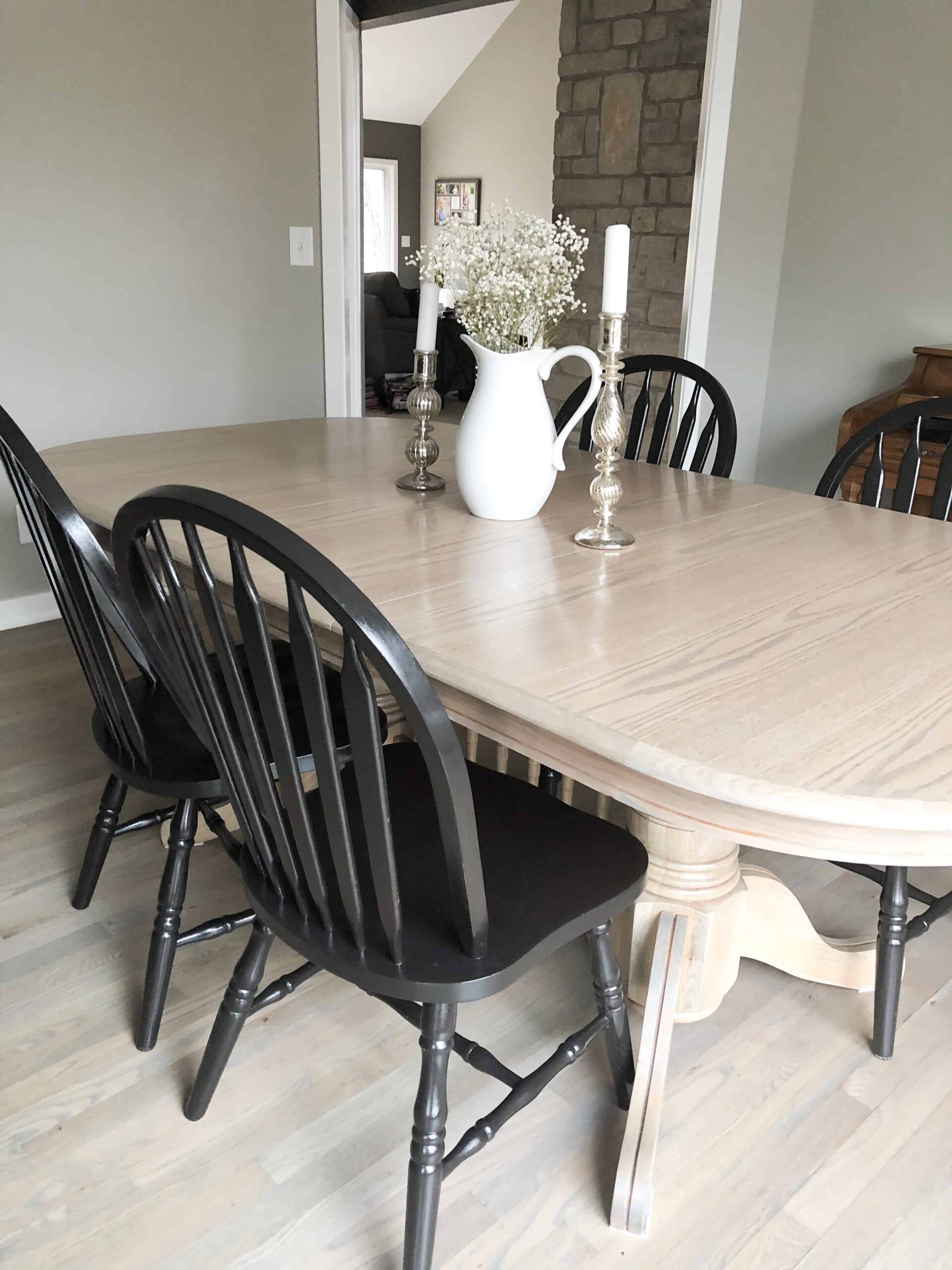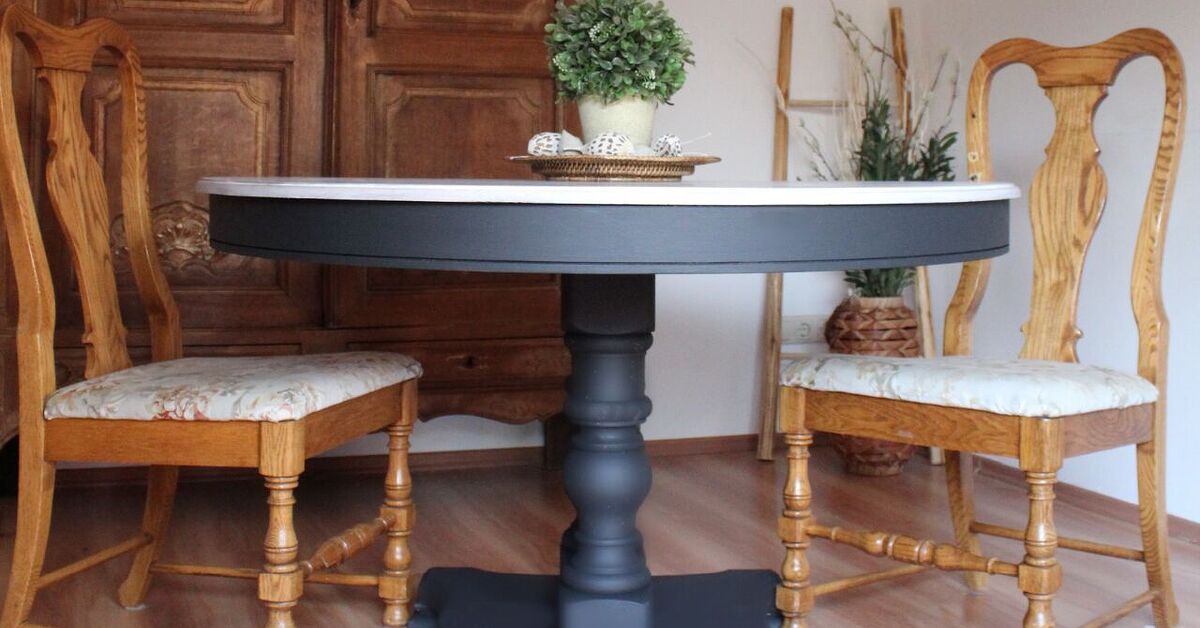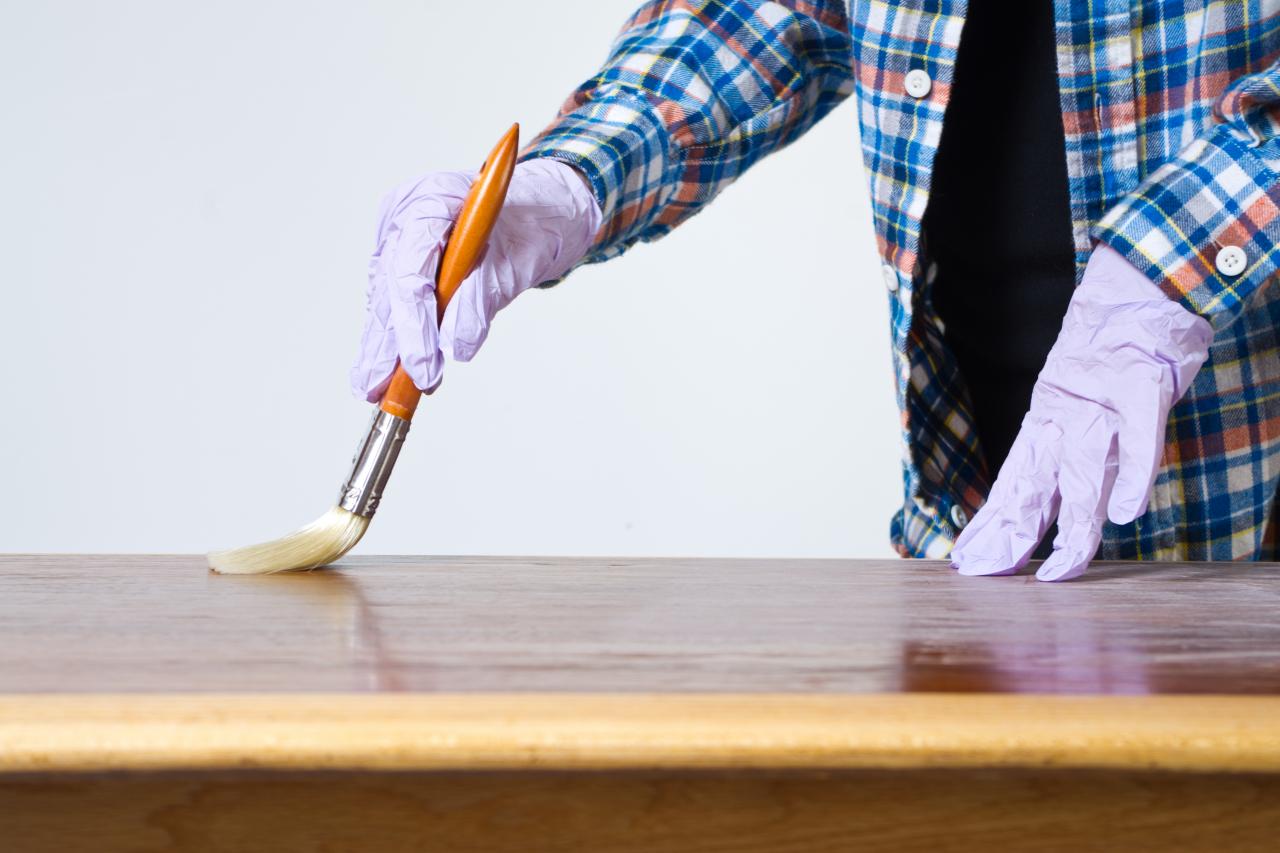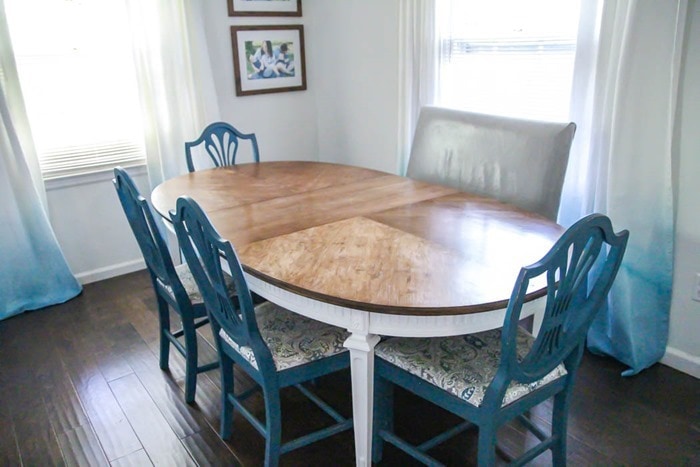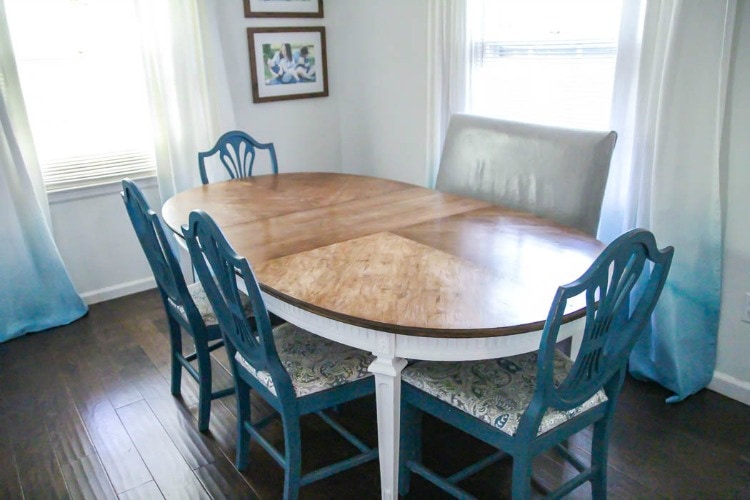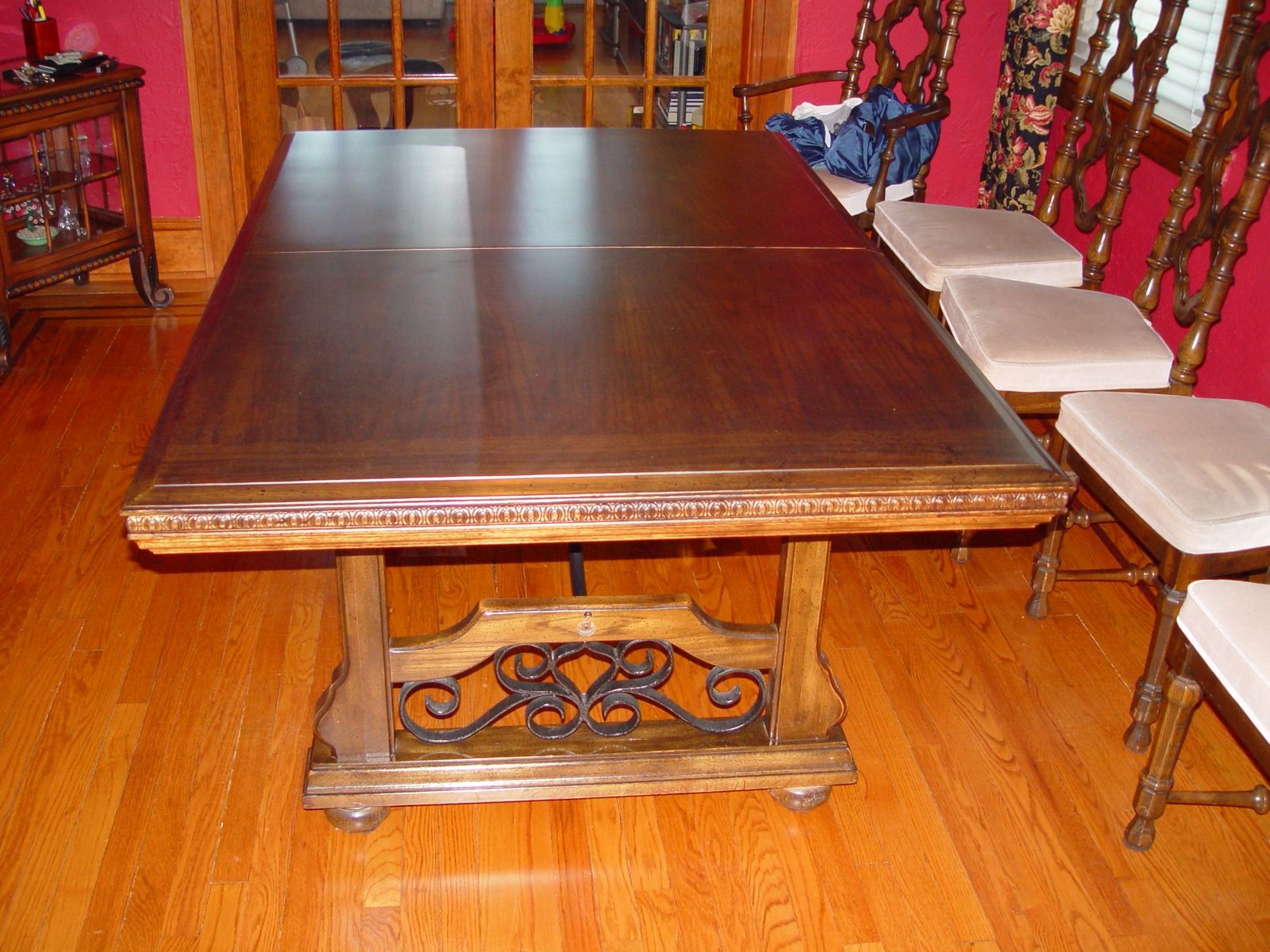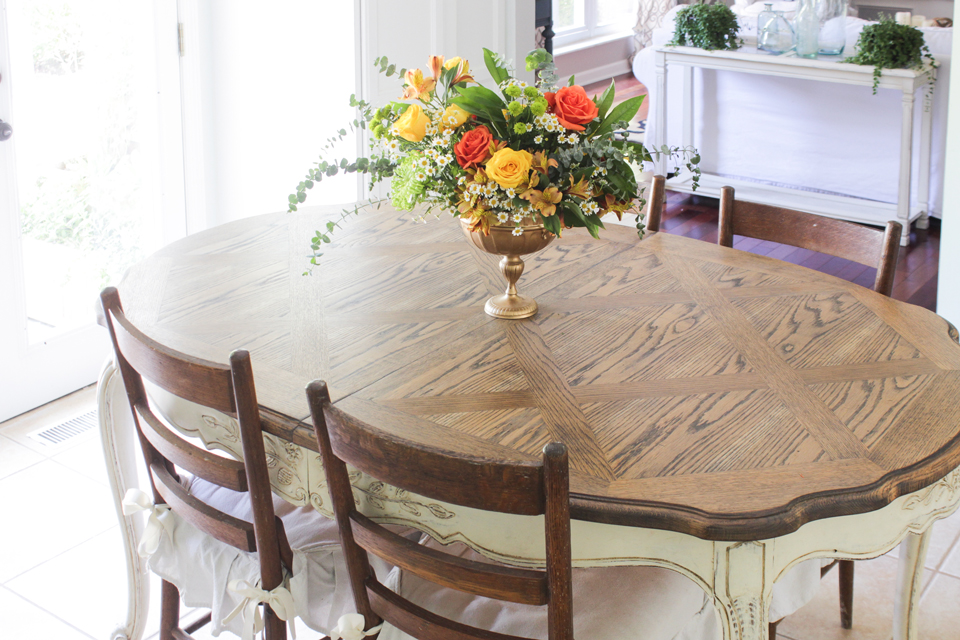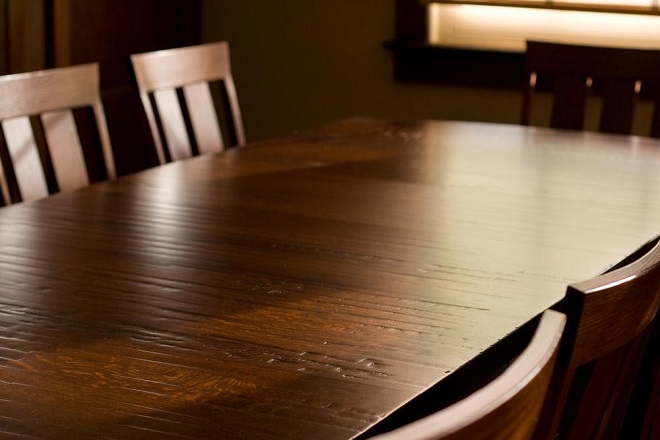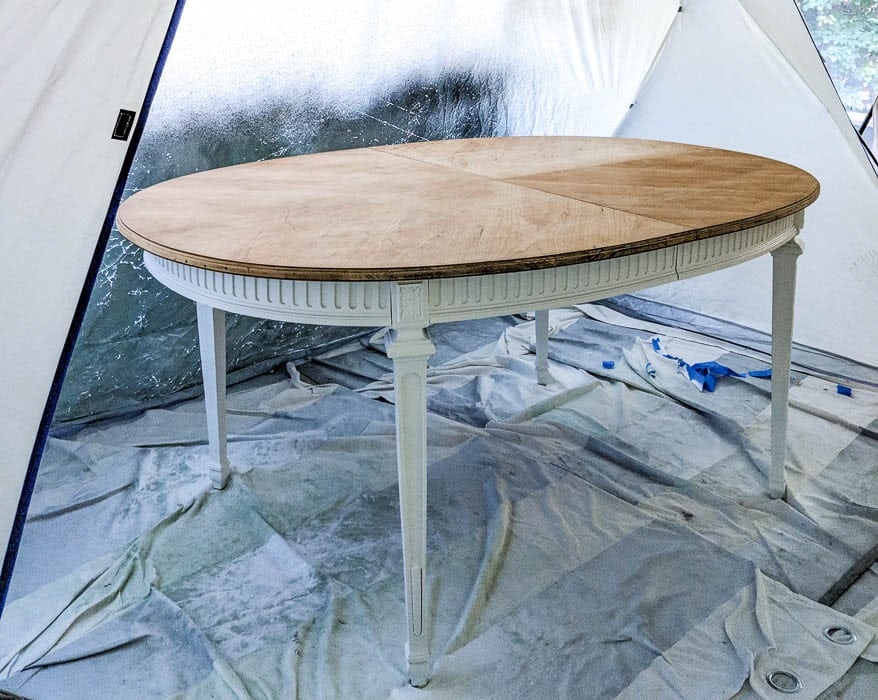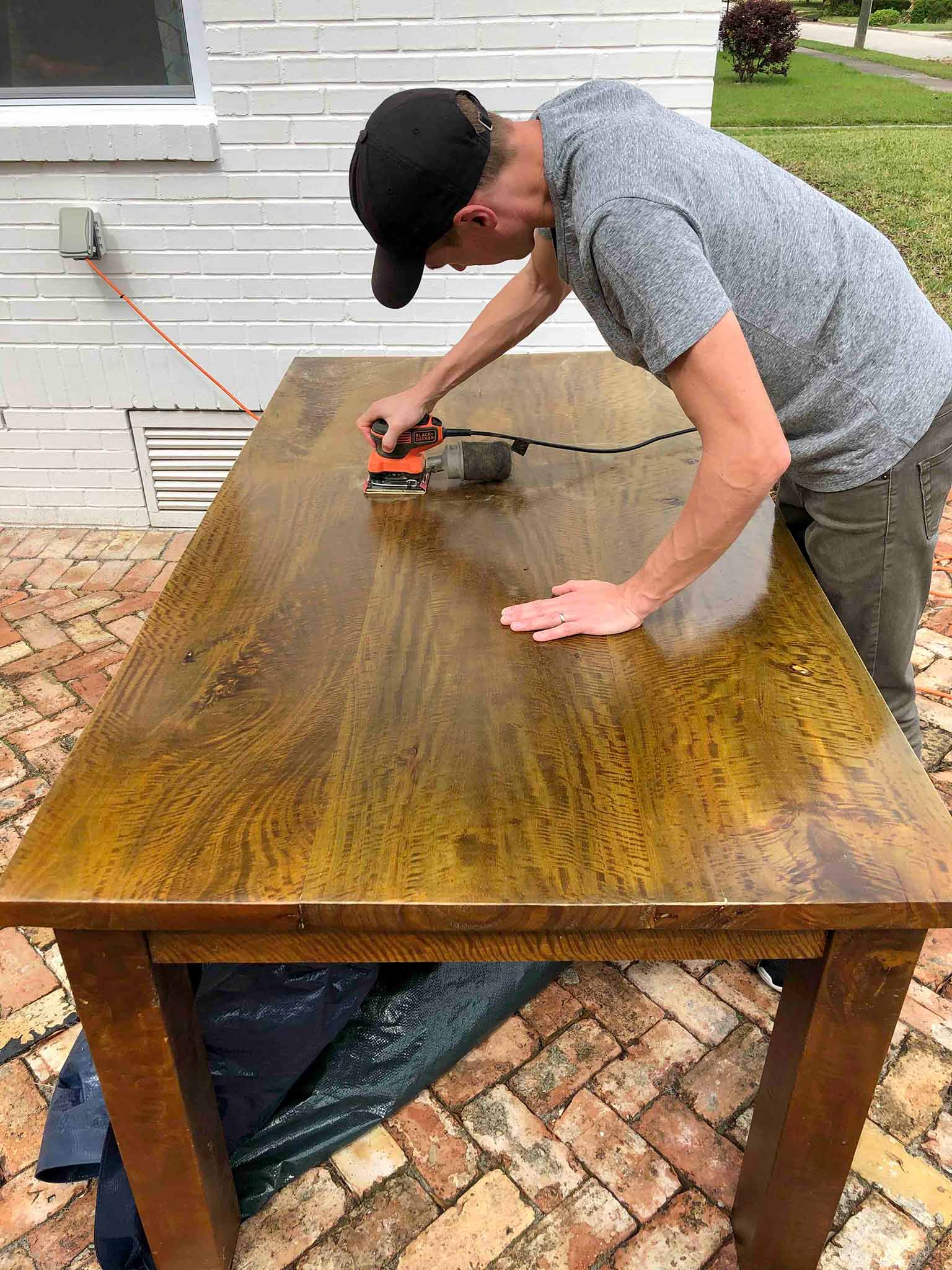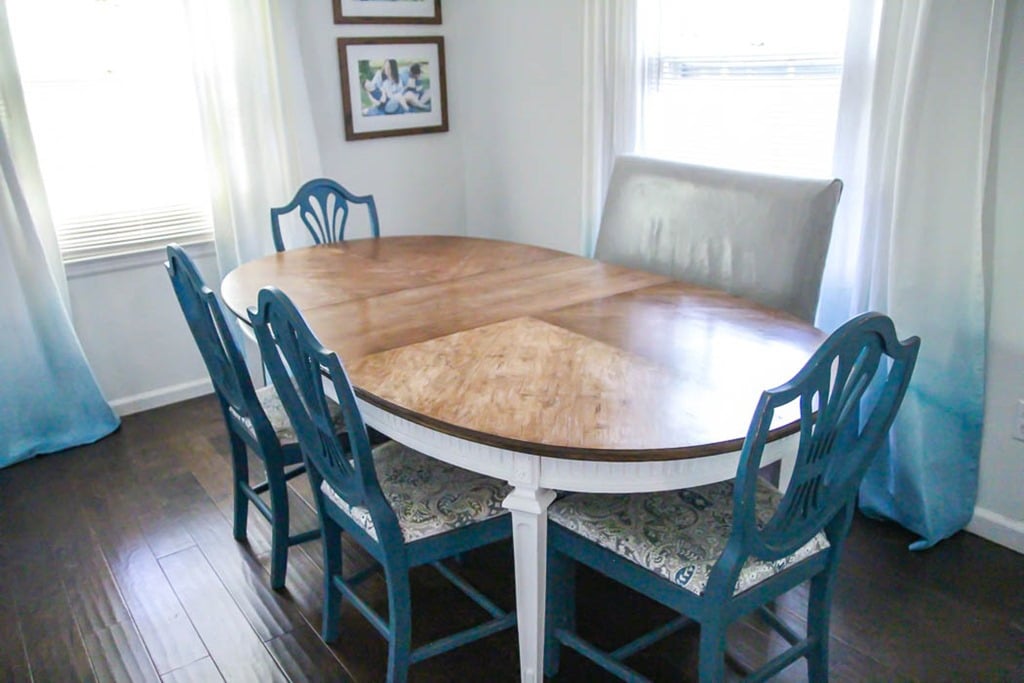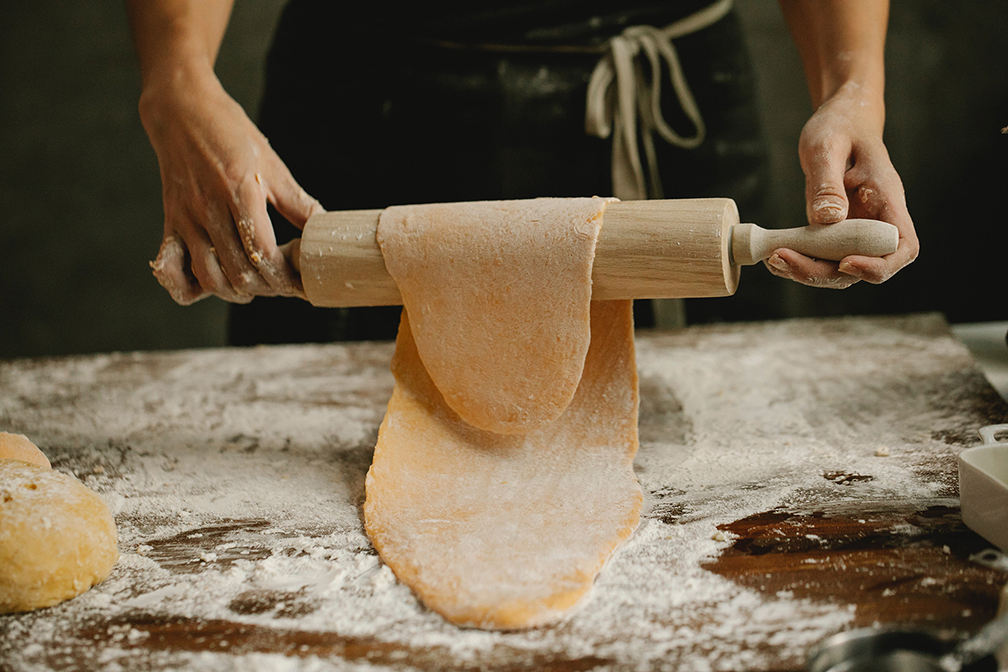If your dining room table is starting to show signs of wear and tear, refinishing it can give it a whole new look without breaking the bank. Refinishing a dining room table may seem like a daunting task, but with the right tools and techniques, it can be a fun and rewarding DIY project. Here's a step-by-step guide on how to refinish your dining room table and bring it back to its former glory.Refinishing a Dining Room Table: A Step-by-Step Guide
Before you begin the refinishing process, make sure you have all the necessary tools and materials. You will need a sander, sandpaper, wood stain, polyurethane, paintbrushes, and a clean cloth. Once you have everything you need, follow these steps: Step 1: Start by removing any existing finish or paint from the table. You can use a sander to make the process quicker, but if you don't have one, sandpaper will do the job. Make sure to sand in the direction of the wood grain to avoid scratches. Step 2: Once you have removed the old finish, wipe down the table with a clean cloth to remove any dust or debris. This will ensure a smooth and even finish. Step 3: Now it's time to stain your table. Use a paintbrush to apply the stain, following the wood grain. You can choose to use a lighter or darker stain depending on the look you want to achieve. Remember to work in small sections and wipe off any excess stain with a clean cloth. Step 4: After the stain has dried, it's time to seal your table with polyurethane. This will protect the wood and give it a beautiful glossy finish. Apply the polyurethane in long, even strokes, and let it dry completely. Step 5: Once the polyurethane has dried, lightly sand the table with fine-grit sandpaper to remove any imperfections. Wipe it down with a clean cloth before applying a second coat of polyurethane. Let it dry completely before using your newly refinished dining room table.How to Refinish a Dining Room Table
Refinishing a dining room table is a great DIY project that can save you money and give you a sense of accomplishment. However, it's essential to take the necessary precautions and follow the proper steps to achieve the best results. Here are some tips for a successful DIY dining room table refinishing: Tip #1: Choose the right stain for your table. Consider the type of wood and the color you want to achieve. It's always a good idea to test the stain on a small area before applying it to the entire table. Tip #2: Don't rush the sanding process. Take your time and make sure to sand evenly and in the direction of the wood grain. This will ensure a smooth and professional-looking finish. Tip #3: Use a clean cloth to wipe down the table between each step. This will help remove any dust or debris and give you a clean surface to work with. Tip #4: Be patient and let each coat of stain and polyurethane dry completely before moving on to the next step. Rushing this process can result in a sloppy finish.DIY Dining Room Table Refinishing
Wooden dining room tables are a popular choice for many homeowners, but they can also be susceptible to scratches and stains. Refinishing a wooden dining room table can bring it back to life and make it look brand new. Here are some tips for refinishing a wooden dining room table: Tip #1: Use a wood filler to fill in any scratches or dents on the table before sanding. This will help create a smooth and even surface for the stain to adhere to. Tip #2: If your table has intricate details or carvings, use a small brush to apply the stain to those areas. This will ensure that the stain gets into all the nooks and crannies for a professional finish. Tip #3: Consider using a wood conditioner before applying the stain. This will help the wood absorb the stain evenly and prevent blotchiness.Refinishing a Wooden Dining Room Table
Refinishing a dining room table can be a time-consuming process, but the end result is worth it. Here are some additional tips to keep in mind to achieve the best results: Tip #1: Work in a well-ventilated area when using stain and polyurethane to avoid inhaling harmful fumes. Tip #2: Use a drop cloth or old sheets to protect your floors and surrounding furniture from any spills or drips. Tip #3: Don't be afraid to experiment with different stain colors and finishes to achieve the look you want. Tip #4: Once your table is refinished, use coasters and placemats to protect the surface from scratches and spills.Tips for Refinishing a Dining Room Table
Before diving into the refinishing process, it's essential to understand the type of wood your dining room table is made of. Different types of wood require different techniques and products, so it's best to do your research beforehand. You can also consult a professional for advice on the best approach for your specific table.Refinishing a Dining Room Table: What You Need to Know
The transformation of a refinished dining room table can be truly remarkable. Before you start the refinishing process, take some before pictures to document the change. Once your table is complete, take some after pictures to see the difference. You'll be amazed at the transformation.Refinishing a Dining Room Table: Before and After
While refinishing a dining room table is a relatively straightforward process, there are some common mistakes that can be easily avoided. These include: Mistake #1: Not sanding enough. Sanding is a crucial step in the refinishing process, and skipping or rushing this step can result in an uneven or blotchy finish. Mistake #2: Applying too much stain. Always follow the manufacturer's instructions and wipe off any excess stain to avoid an overly dark or sticky finish. Mistake #3: Not waiting for the polyurethane to dry before using the table. This can result in smudges and scratches on the surface of your newly refinished table.Refinishing a Dining Room Table: Common Mistakes to Avoid
If you don't have access to a sander or simply want to avoid the mess of sanding, there are alternative methods for refinishing a dining room table. One option is to use a liquid sander or deglosser, which can remove the old finish without the need for sanding. Another option is to use chalk paint, which can be applied directly to the table without sanding. However, keep in mind that these methods may not achieve the same level of smoothness and may require more coats of stain to achieve the desired color.How to Refinish a Dining Room Table Without Sanding
Choosing the right stain for your dining room table can be overwhelming with so many options available. When selecting a stain, consider the color of your dining room, the type of wood, and the overall style you want to achieve. If you're unsure, test the stain on a small area before committing to the entire table. Refinishing a dining room table may seem like a daunting task, but with the right tools, techniques, and patience, you can achieve a beautiful and professional-looking finish. Follow these tips, and you'll have a stunning dining room table that you can be proud of for years to come.Refinishing a Dining Room Table: Choosing the Right Stain
Why Refinishing Your Dining Room Table is the Perfect Design Choice
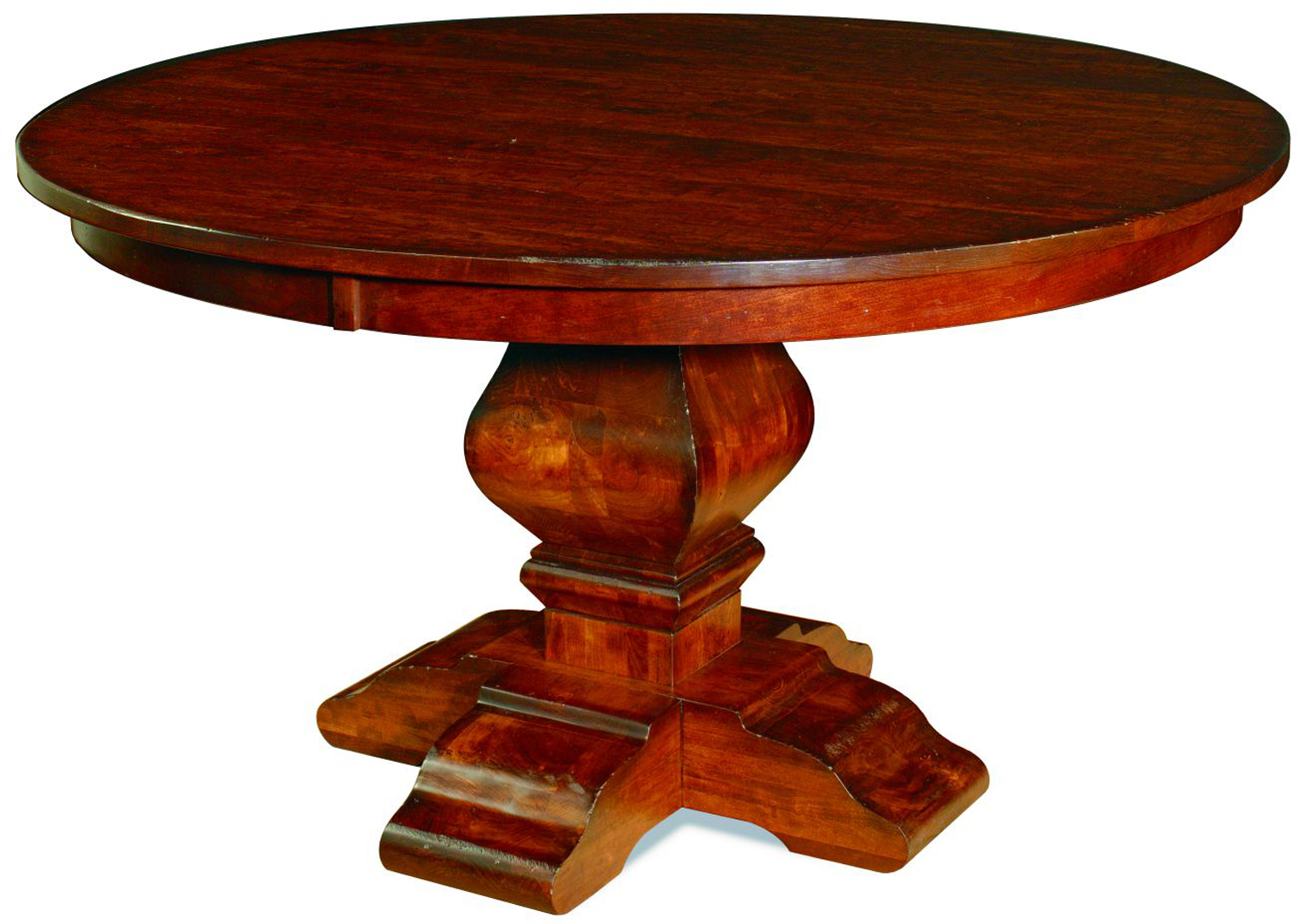
Revitalize Your Space with a Refinished Dining Room Table
 When it comes to designing your home, every detail counts. From the color of the walls to the furniture pieces, each element contributes to the overall aesthetic of your space. And one of the most important pieces of furniture in any home is the dining room table. Not only is it a functional piece for meals and gatherings, but it also serves as a centerpiece for the room. That's why it's essential to choose a dining room table that not only fits your personal style but also complements the rest of your home. And one way to achieve this is by
refinishing your dining room table.
When it comes to designing your home, every detail counts. From the color of the walls to the furniture pieces, each element contributes to the overall aesthetic of your space. And one of the most important pieces of furniture in any home is the dining room table. Not only is it a functional piece for meals and gatherings, but it also serves as a centerpiece for the room. That's why it's essential to choose a dining room table that not only fits your personal style but also complements the rest of your home. And one way to achieve this is by
refinishing your dining room table.
Bring New Life to an Old Piece
 Over time, dining room tables can start to look worn out and lose their luster. Scratches, dings, and watermarks can all take away from the beauty of the table. However, instead of replacing it with a new one, refinishing your dining room table can give it a new lease on life.
Refinishing
involves stripping off the old finish, sanding down the surface, and applying a new stain or paint. This process not only restores the table's appearance but also allows you to customize it to your liking. You can choose a new color or stain that better suits your home's design and gives the table a fresh, updated look.
Over time, dining room tables can start to look worn out and lose their luster. Scratches, dings, and watermarks can all take away from the beauty of the table. However, instead of replacing it with a new one, refinishing your dining room table can give it a new lease on life.
Refinishing
involves stripping off the old finish, sanding down the surface, and applying a new stain or paint. This process not only restores the table's appearance but also allows you to customize it to your liking. You can choose a new color or stain that better suits your home's design and gives the table a fresh, updated look.
Save Money and the Environment
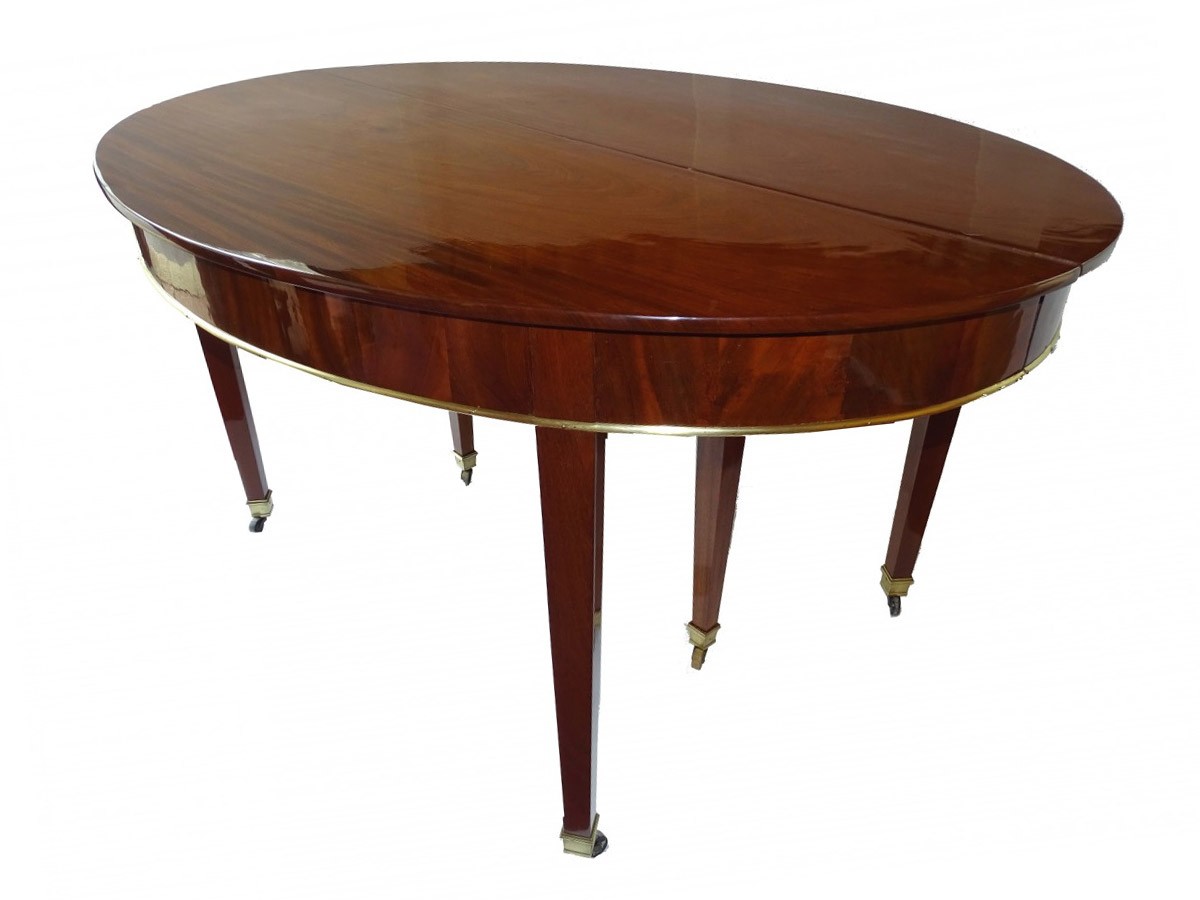 Aside from the aesthetic benefits,
refinishing your dining room table
is also a cost-effective and environmentally-friendly choice. Buying a new dining room table can be expensive, especially if you're looking for a high-quality piece. By refinishing your existing table, you can save money and still have a beautiful, like-new piece of furniture. Additionally, refinishing prevents your old table from ending up in a landfill, reducing your carbon footprint and contributing to a more sustainable lifestyle.
Aside from the aesthetic benefits,
refinishing your dining room table
is also a cost-effective and environmentally-friendly choice. Buying a new dining room table can be expensive, especially if you're looking for a high-quality piece. By refinishing your existing table, you can save money and still have a beautiful, like-new piece of furniture. Additionally, refinishing prevents your old table from ending up in a landfill, reducing your carbon footprint and contributing to a more sustainable lifestyle.
A Personal Touch
 Refinishing your dining room table also gives you the opportunity to add a personal touch to your home. You can choose a unique color or finish that reflects your personality and style. You can also experiment with different techniques, such as distressing or stenciling, to create a one-of-a-kind piece that adds character to your space. Plus, the process of refinishing your dining room table can be a fun and rewarding DIY project, allowing you to take pride in your home's design.
In conclusion, refinishing your dining room table is an excellent design choice for any home. It revitalizes your space, saves money, and adds a personal touch to your home's aesthetic. So, if you're looking to upgrade your dining room's look, consider
refinishing your dining room table
for a cost-effective, eco-friendly, and customizable solution.
Refinishing your dining room table also gives you the opportunity to add a personal touch to your home. You can choose a unique color or finish that reflects your personality and style. You can also experiment with different techniques, such as distressing or stenciling, to create a one-of-a-kind piece that adds character to your space. Plus, the process of refinishing your dining room table can be a fun and rewarding DIY project, allowing you to take pride in your home's design.
In conclusion, refinishing your dining room table is an excellent design choice for any home. It revitalizes your space, saves money, and adds a personal touch to your home's aesthetic. So, if you're looking to upgrade your dining room's look, consider
refinishing your dining room table
for a cost-effective, eco-friendly, and customizable solution.

